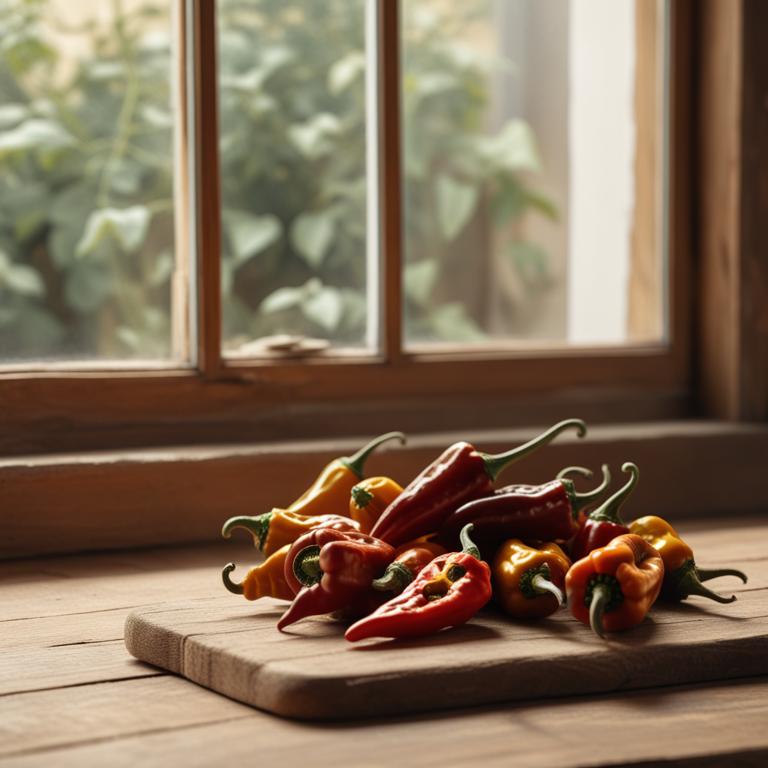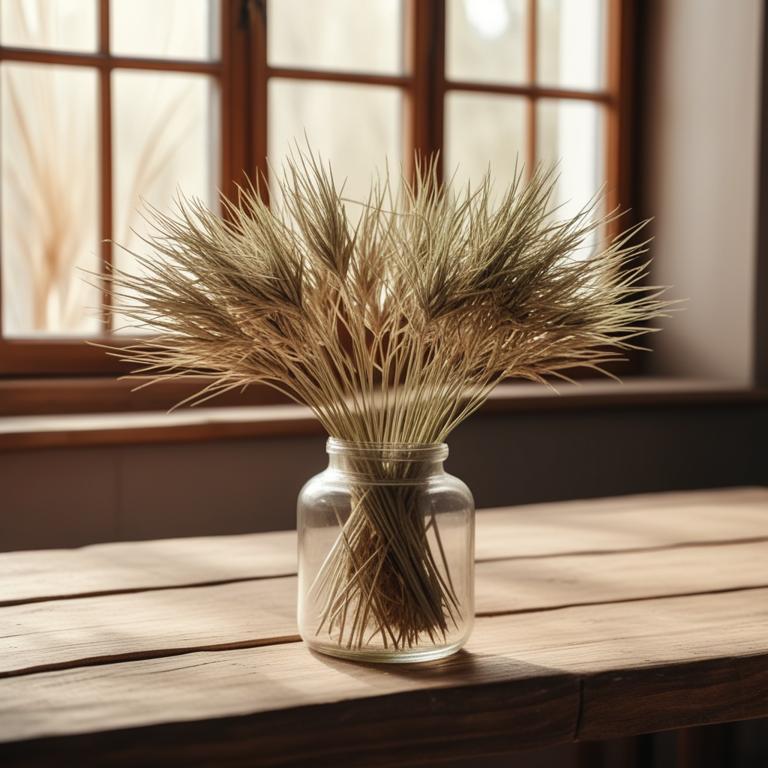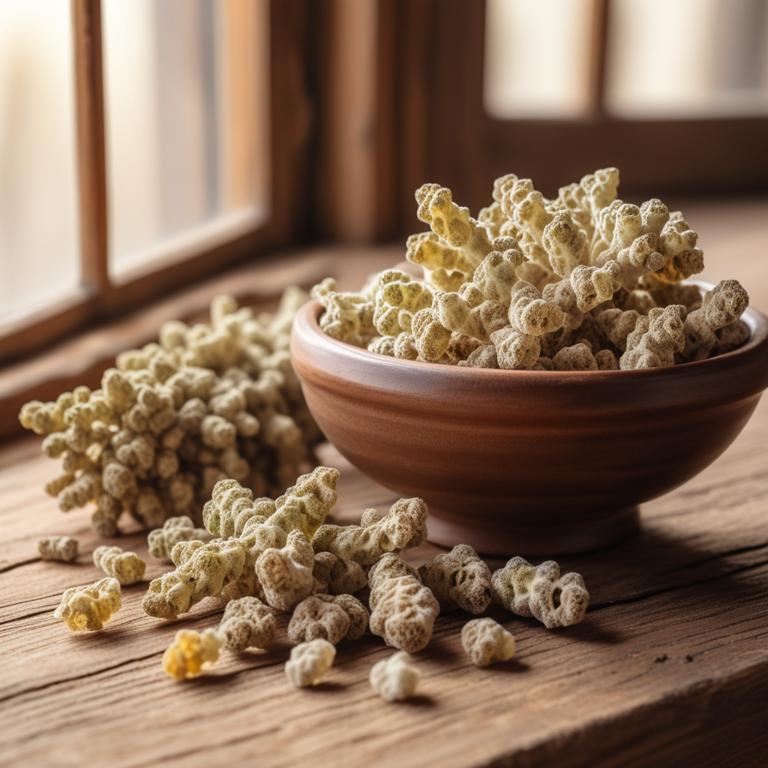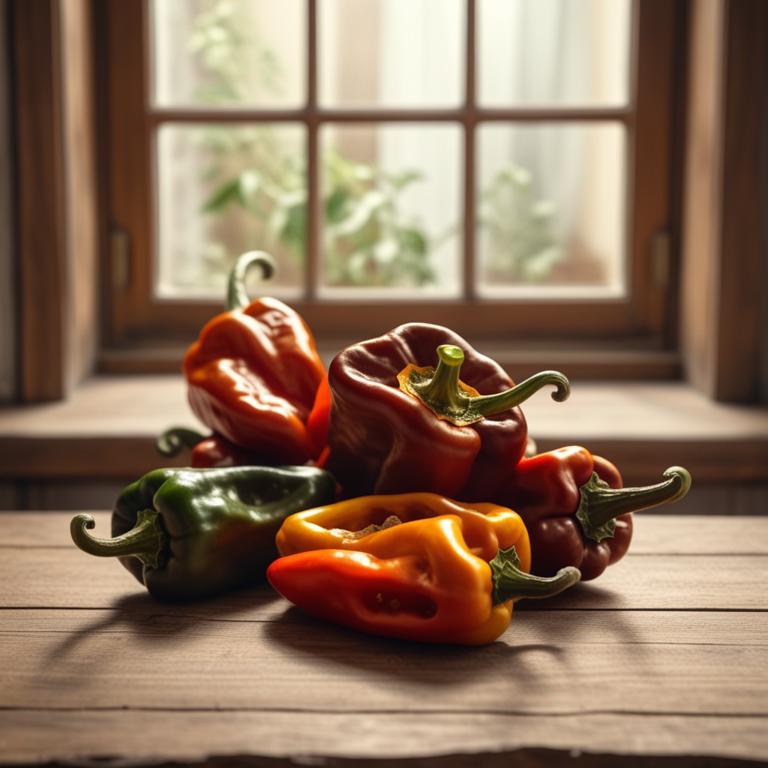Updated: Nov 30, 2024
10 Herbal Tinctures For Osteoarthritis
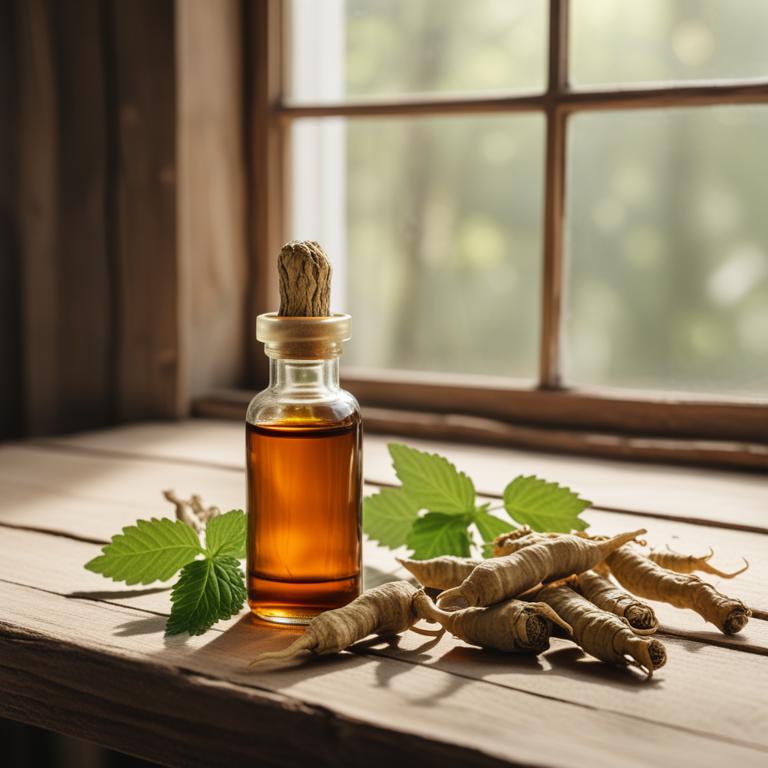
Herbal tinctures can be a helpful addition to your osteoarthritis treatment plan.
These natural remedies work by reducing inflammation and pain in the joints. For example, Curcuma longa, commonly known as turmeric, contains a powerful compound called curcumin, which has potent anti-inflammatory properties. When taken as a tincture, curcumin can help ease joint pain and swelling, making it easier to move around and perform daily activities. Another herb that's often used to relieve osteoarthritis symptoms is Zingiber officinale, or ginger. Ginger has anti-inflammatory compounds called gingerols and shogaols, which can help reduce pain and inflammation in the joints. When taken as a tincture, ginger can also help improve digestion and reduce nausea, which is often a side effect of osteoarthritis medication.
Licorice root, or Glycyrrhiza glabra, is another herb that's been used for centuries to treat osteoarthritis. It has anti-inflammatory compounds called glycyrrhizin and glycyrrhetinic acid, which can help reduce joint pain and inflammation. When taken as a tincture, licorice root can also help soothe and protect the digestive tract, reducing the risk of ulcers and other digestive problems. Taking herbal tinctures for osteoarthritis can bring many benefits to your life. By reducing pain and inflammation, you may be able to move around more easily and perform daily activities without discomfort. You may also be able to reduce your reliance on prescription medication, which can have side effects like stomach problems and fatigue. Additionally, herbal tinctures can help you feel more relaxed and calm, which can be especially helpful if you're experiencing anxiety or stress related to your condition.
By incorporating herbal tinctures into your treatment plan, you may be able to take control of your osteoarthritis symptoms and improve your overall quality of life.
This article explains in detail what are the best herbal teas for osteoarthritis and wh.
Also, you may be interested in...
Today Free Bonus!
The Ultimate Herb Drying Checklist
(For Long-Lasting Powerful Medicinal Effect)
How to easily dry herbs that don't mold and that keep their strong medicinal power for more than 1 year.
Table of Contents
1. Curcuma longa

Curcuma longa tinctures contains the bioactive constituents curcumin, demethoxycurcumin, and bisdemethoxycurcumin.
These compounds have anti-inflammatory and antioxidant properties, which can help reduce joint pain and inflammation associated with osteoarthritis. Curcumin, in particular, has been shown to inhibit the production of pro-inflammatory enzymes and cytokines, thereby reducing joint inflammation. The antioxidant properties of curcuma longa tinctures can also help protect against oxidative stress and cell damage, which is common in osteoarthritis.
By reducing inflammation and oxidative stress, curcuma longa tinctures may help alleviate symptoms and improve joint health in people with osteoarthritis.
- Gather ingredients: 1 cup of dried Curcuma longa root, 2 cups of 80% vodka, and a clean glass jar.
- Combine the dried Curcuma longa root and vodka in the glass jar. Make sure the root is fully covered by the vodka.
- Seal the jar and store it in a cool, dark place for 2-3 weeks, shaking the jar every day.
- After 2-3 weeks, strain the liquid through a cheesecloth or a coffee filter into another clean glass jar. Discard the solids.
- Label the jar with the date and contents. Store the tincture in a cool, dark place. Use 20-30 drops, 2-3 times a day, mixed with water or food, to relieve osteoarthritis symptoms.
2. Zingiber officinale

Zingiber officinale tinctures contains a compound called gingerol, a bioactive constituent that has potent anti-inflammatory properties.
Gingerol blocks the production of prostaglandins, hormone-like substances that cause pain and inflammation in the body. It also contains another bioactive compound called shogaol, which inhibits the activity of COX-2 enzymes, further reducing inflammation. By reducing inflammation and pain, Zingiber officinale tinctures may help alleviate symptoms of osteoarthritis, a condition characterized by joint pain and stiffness.
The anti-inflammatory properties of gingerol and shogaol in Zingiber officinale tinctures make it a potential natural remedy for managing osteoarthritis symptoms.
- Gather 250-500g of dried Zingiber officinale root and 1 cup of 80-100 proof vodka.
- Combine the dried root and vodka in a clean glass jar. Make sure the root is fully covered.
- Seal the jar and store it in a cool, dark place for 2-3 weeks, shaking the jar daily.
- After 2-3 weeks, strain the mixture through a cheesecloth or a fine-mesh sieve into another clean glass jar. Discard the solids.
- Store the tincture in a cool, dark place. Use 20-30 drops, 2-3 times a day, as needed for osteoarthritis relief.
3. Glycyrrhiza glabra

Glycyrrhiza glabra tinctures contains active constituents like glycyrrhizin and flavonoids, which have anti-inflammatory properties that help reduce swelling and pain in osteoarthritis.
Glycyrrhizin, in particular, has been shown to inhibit the production of inflammatory mediators, such as prostaglandins and leukotrienes, which contribute to joint inflammation. The flavonoids in Glycyrrhiza glabra tinctures have antioxidant properties that help protect joints from oxidative stress and damage caused by free radicals. Additionally, Glycyrrhiza glabra tinctures may contain other anti-inflammatory compounds like triterpenoids, which can help reduce inflammation and pain in osteoarthritis.
By reducing inflammation and oxidative stress, Glycyrrhiza glabra tinctures can help alleviate the symptoms of osteoarthritis, providing relief from joint pain and swelling.
- Gather 1 cup of fresh or dried Glycyrrhiza glabra roots. Clean and chop them into small pieces.
- Combine the chopped roots with 2 cups of 80% ethanol or vodka in a clean glass jar.
- Store the jar in a cool, dark place and shake it well for 2-3 weeks, twice a day.
- After 2-3 weeks, strain the mixture through a cheesecloth or a coffee filter into another clean glass container. Discard the solids.
- Transfer the tincture to dark glass bottles and store them in a cool, dark place. Use 15-30 drops of the tincture, 2-3 times a day, mixed with water or another liquid, to help manage osteoarthritis symptoms.
4. Capsicum annuum

Capsicum annuum tinctures contains capsaicin, a potent bioactive constituent that provides relief from osteoarthritis pain.
Capsaicin works by blocking the production of a chemical called substance P, which transmits pain signals to the brain. This blockage reduces inflammation and relaxes muscles, making it easier to move joints. Capsaicin also increases the levels of endorphins, the body's natural painkillers, which further helps alleviate pain and discomfort.
By reducing pain and inflammation, capsaicin in Capsicum annuum tinctures can help manage osteoarthritis symptoms and improve quality of life.
- Gather 1 cup of fresh or dried Capsicum annuum. Wear gloves to protect your skin.
- Combine 1 cup of Capsicum annuum with 2 cups of 80% vodka in a clean glass jar. Close the jar.
- Store the jar in a cool, dark place for 2-3 weeks. Shake the jar every 2 days.
- Strain the mixture through a cheesecloth or a coffee filter into another clean glass jar. Discard the solids.
- Store the tincture in the fridge. Use 5-7 drops, 2-3 times a day, under the guidance of a healthcare professional.
5. Ginkgo biloba

Ginkgo biloba tinctures contains flavonoids and terpenoids as its main bioactive constituents.
The flavonoids, particularly quercetin and kaempferol, have anti-inflammatory properties that help reduce swelling and pain in osteoarthritis joints. The terpenoids, such as bilobalide and ginkgolides, have antioxidant properties that protect the joints from oxidative stress and cell damage. The combined action of these compounds helps improve blood flow and reduce inflammation, which can alleviate the symptoms of osteoarthritis.
By reducing inflammation and promoting healthy joint function, Ginkgo biloba tinctures can help manage osteoarthritis symptoms and improve joint mobility.
- Gather 1 cup of Ginkgo biloba leaves and 2 cups of vodka in a clean glass jar.
- Add 1 cup of water to the jar and stir well. Let it sit for 2 weeks in a cool, dark place, shaking the jar every day.
- Strain the mixture through a cheesecloth or a fine-mesh sieve into another clean glass jar. Discard the solids.
- Transfer the liquid to a glass bottle and add 1 tablespoon of glycerin to preserve it.
- Label the bottle with the date and the dosage instructions (typically 20-30 drops, 2-3 times a day). Store it in a cool, dark place.
6. Achillea millefolium
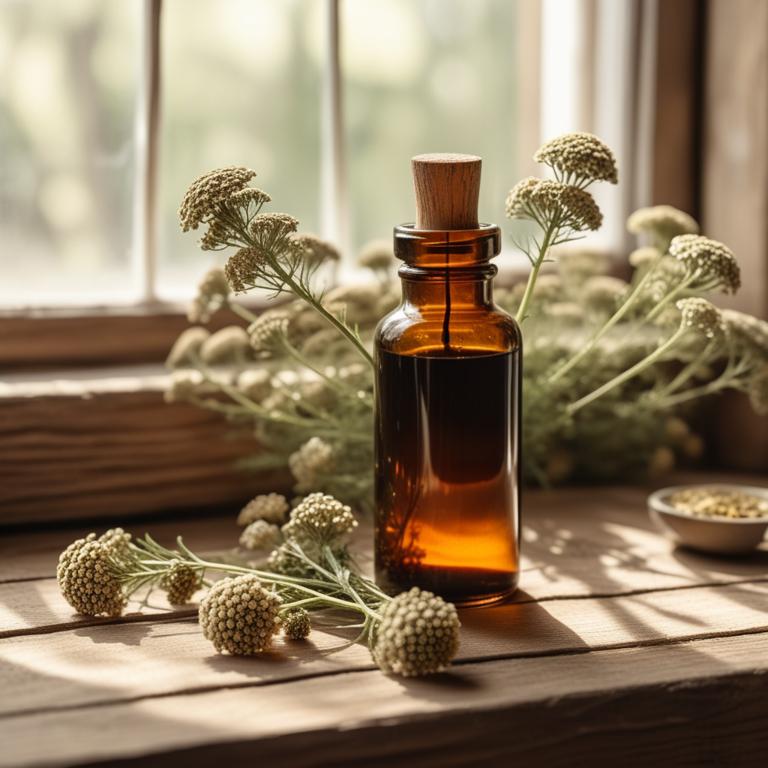
Achillea millefolium tinctures contains bioactive constituents like sesquiterpene lactones, flavonoids, and phenolic acids.
These compounds have anti-inflammatory and antioxidant properties, which help reduce inflammation and oxidative stress in the joints affected by osteoarthritis. The sesquiterpene lactones, particularly achillin and alantolactone, inhibit the production of pro-inflammatory enzymes, while the flavonoids and phenolic acids neutralize free radicals that damage joint tissues. By reducing inflammation and oxidative stress, Achillea millefolium tinctures may help alleviate joint pain and stiffness associated with osteoarthritis.
Regular use of this tincture may also improve joint mobility and reduce the formation of scar tissue that can contribute to joint damage.
- Gather 1 cup of fresh or dried Achillea millefolium leaves and flowers. Use a clean pair of scissors to cut them into small pieces.
- Combine the plant material with 2 cups of 80% vodka in a clean glass jar. Make sure the plant material is completely covered by the vodka.
- Seal the jar tightly and place it in a cool, dark place. Let it sit for 2-3 weeks, shaking the jar every day.
- After 2-3 weeks, strain the liquid through a cheesecloth or a coffee filter into another clean glass jar. Discard the plant material.
- Transfer the tincture to a dark glass bottle and store it in a cool, dark place. Use 20-30 drops of the tincture, 2-3 times a day, mixed with water or food, to help manage osteoarthritis symptoms.
7. Equisetum arvense
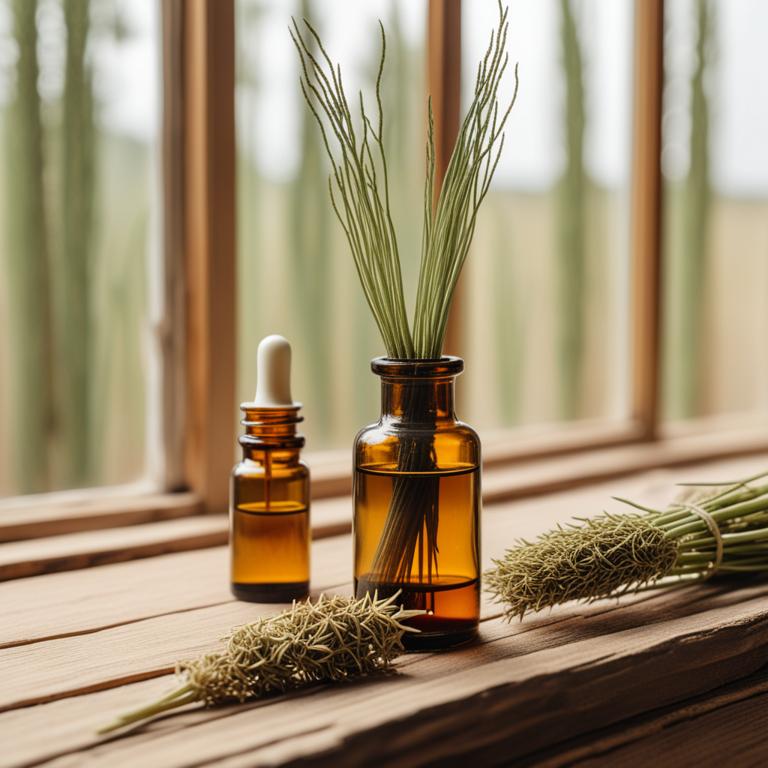
Equisetum arvense tinctures contains a concentration of bioactive compounds, including ferulic acid, caffeic acid, and isoflavones.
These compounds have anti-inflammatory properties, which can help reduce swelling and pain in joints affected by osteoarthritis. The ferulic acid in Equisetum arvense tinctures also has antioxidant properties, which can help protect cartilage from damage and promote healthy joint function. Additionally, the tannins present in Equisetum arvense tinctures have astringent properties, which can help reduce inflammation and slow down joint degeneration.
By addressing the underlying causes of osteoarthritis, Equisetum arvense tinctures may be a useful complementary treatment for managing symptoms and promoting joint health.
- Gather 1 cup of Equisetum arvense roots and 2 cups of 80% vodka in a clean glass jar.
- Place the Equisetum arvense roots in the jar, covering them completely with vodka.
- Seal the jar and store it in a cool, dark place for 2-3 weeks, shaking the jar daily.
- After 2-3 weeks, strain the liquid through a cheesecloth into another clean glass jar, discarding the roots.
- Transfer the tincture to small bottles and label them. Take 20-30 drops, 2-3 times a day, mixed with water or food, under the guidance of a healthcare professional for osteoarthritis relief.
8. Boswellia serrata
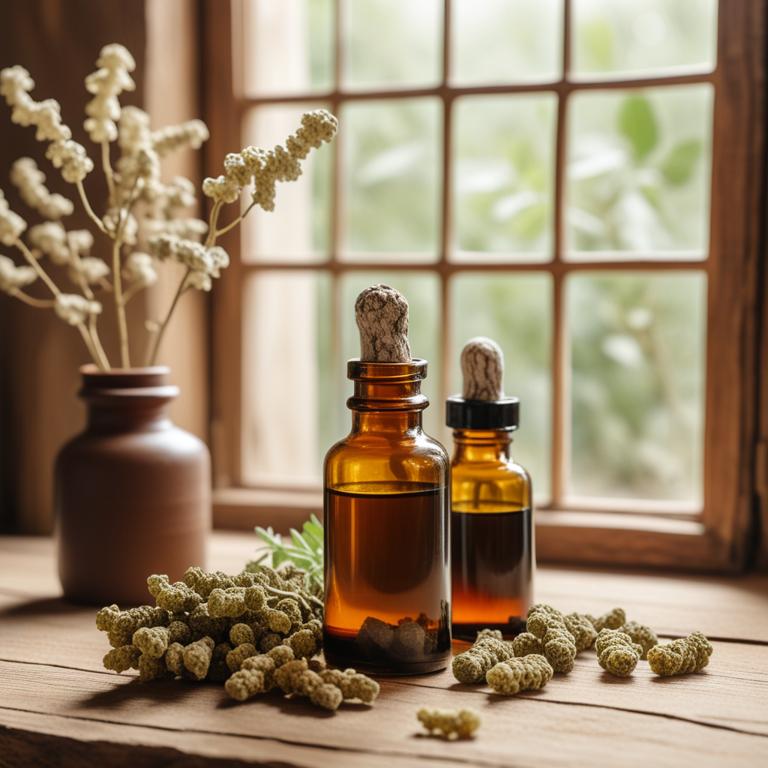
Boswellia serrata tinctures contains boswellic acids, particularly acetyl-11-keto-beta-boswellic acid (AKBA) and 3-acetyl-11-keto-beta-boswellic acid, which are responsible for its therapeutic effects.
These compounds have potent anti-inflammatory properties, which help to reduce swelling and pain in the joints associated with osteoarthritis. The boswellic acids in Boswellia serrata tinctures also inhibit the production of pro-inflammatory enzymes, such as COX-2 and 5-LOX, which contribute to joint inflammation. Additionally, the tincture's anti-inflammatory properties help to reduce cartilage degradation and promote joint health.
Regular use of Boswellia serrata tinctures may lead to improved joint mobility and reduced symptoms of osteoarthritis.
- Gather ingredients: 1 cup of Boswellia serrata roots, 1 cup of vodka (at least 80 proof), and a glass jar.
- Dry the Boswellia serrata roots in a low-temperature oven (150°F - 200°F) for 2 hours. Let cool.
- Combine 1 cup of dried Boswellia serrata roots with 1 cup of vodka in the glass jar. Stir well.
- Seal the jar and let it sit in a cool, dark place for 2-3 weeks, shaking the jar daily. This allows the roots to infuse into the vodka.
- After 2-3 weeks, strain the liquid through a cheesecloth or a coffee filter into another glass jar. Discard the solids. Store the tincture in a cool, dark place.
9. Arnica montana
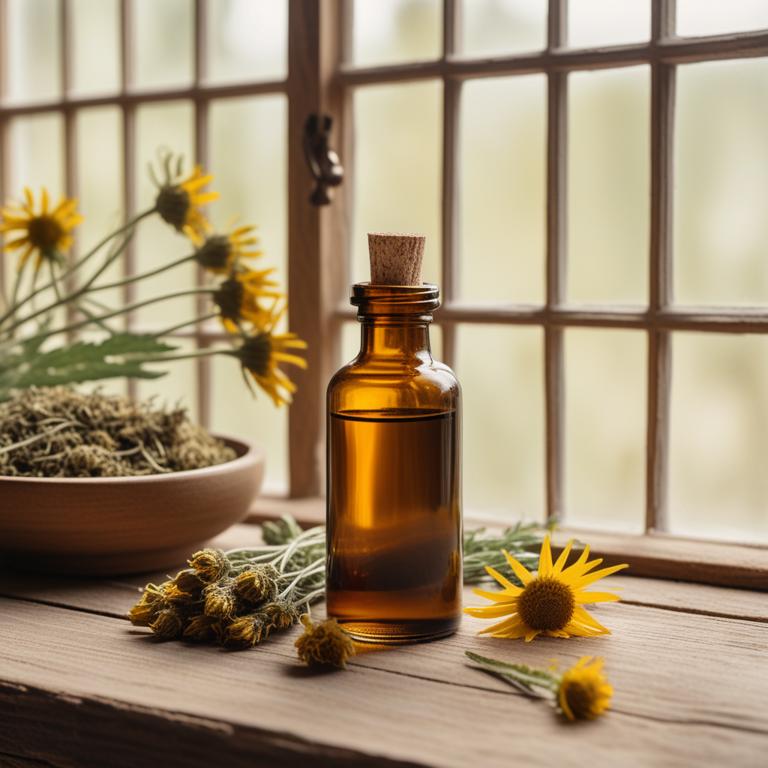
Arnica montana tinctures contains bioactive constituents like sesquiterpene lactones, flavonoids, and phenolic acids that help with osteoarthritis.
These compounds reduce inflammation by inhibiting pro-inflammatory enzymes and free radicals. Arnica's sesquiterpene lactones, particularly helenalin, have anti-inflammatory properties that help alleviate pain and swelling associated with osteoarthritis. The flavonoids in Arnica montana tinctures also have antioxidant properties, which protect joints from oxidative damage caused by inflammation.
By reducing inflammation and oxidative stress, Arnica montana tinctures may help slow down the progression of osteoarthritis.
- Gather 1 cup of dried Arnica montana flowers, a clean glass jar with a lid, a cup of 80-proof vodka, and a coffee filter.
- Combine the dried flowers and vodka in the glass jar. Stir well to coat the flowers.
- Seal the jar with a lid and store it in a cool, dark place. Let it sit for 2-3 weeks, shaking the jar daily.
- After 2-3 weeks, strain the mixture through a coffee filter into another clean glass jar. Discard the solids.
- Label the jar with the date and the name 'Arnica tincture for osteoarthritis.' Store it in a cool, dark place. Use 20-30 drops, 2-3 times a day, under the guidance of a healthcare professional.
10. Panax ginseng

Panax ginseng tinctures contains bioactive constituents like ginsenosides, which are responsible for its medicinal properties.
These compounds have anti-inflammatory effects, which can help reduce joint pain and inflammation associated with osteoarthritis. Ginsenosides also have antioxidant properties, which can protect joints from damage caused by free radicals. The tincture's saponins, another key component, have been shown to inhibit the production of pro-inflammatory chemicals, further reducing joint inflammation.
By reducing inflammation and protecting joints, Panax ginseng tinctures may help alleviate some symptoms of osteoarthritis.
- Gather 1 cup of dried Panax ginseng root, 2 cups of vodka (at least 40% ABV), and a clean glass jar.
- Fill the glass jar with the dried Panax ginseng root, leaving about 1 inch of space at the top.
- Pour the vodka over the ginseng root, making sure the root is completely covered.
- Seal the jar and store it in a cool, dark place for 2-3 weeks, shaking the jar every day.
- Strain the liquid through a cheesecloth or a coffee filter into another clean glass jar, discarding the solids. The tincture is now ready to use.
FAQ
Can drinking herbal tea prevent osteoarthritis from forming?
Drinking herbal tea may help prevent osteoarthritis from forming.
Some teas, like ginger and turmeric, contain compounds that reduce inflammation and slow cartilage breakdown. These anti-inflammatory properties may protect joints from damage.
Regularly consuming these teas could potentially prevent osteoarthritis from developing, but more research is needed to confirm this.
Is it safe to consume herbal teas for osteoarthritis every day?
Some herbal teas, like ginger and turmeric, may help with osteoarthritis symptoms.
However, consuming them daily can interact with medications or worsen certain conditions. It's essential to be cautious and start with small amounts to see how your body reacts.
Some people may experience stomach upset or allergic reactions.
How long does it take for herbal teas to show results in osteoarthritis?
Herbal teas may help with osteoarthritis symptoms, but it's not a quick fix.
Some people may start to feel a bit better within a few days or a week, while others might notice changes after 2-3 weeks of regular consumption.
It's a gradual process and results can vary from person to person.
Related Articles
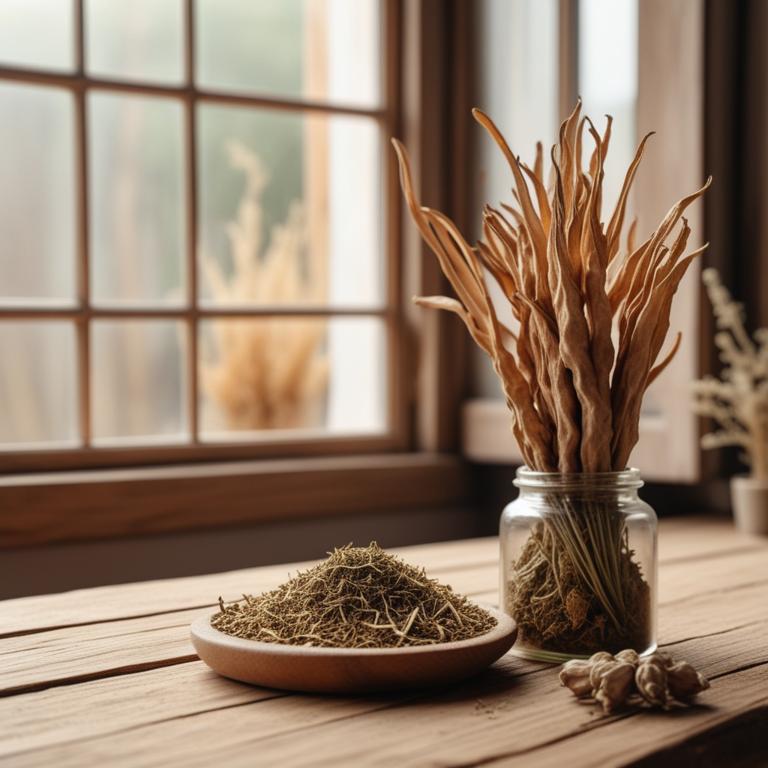
Osteoporosis: Exploring Causes, Medicinal Herbs, and Herbal Preparations
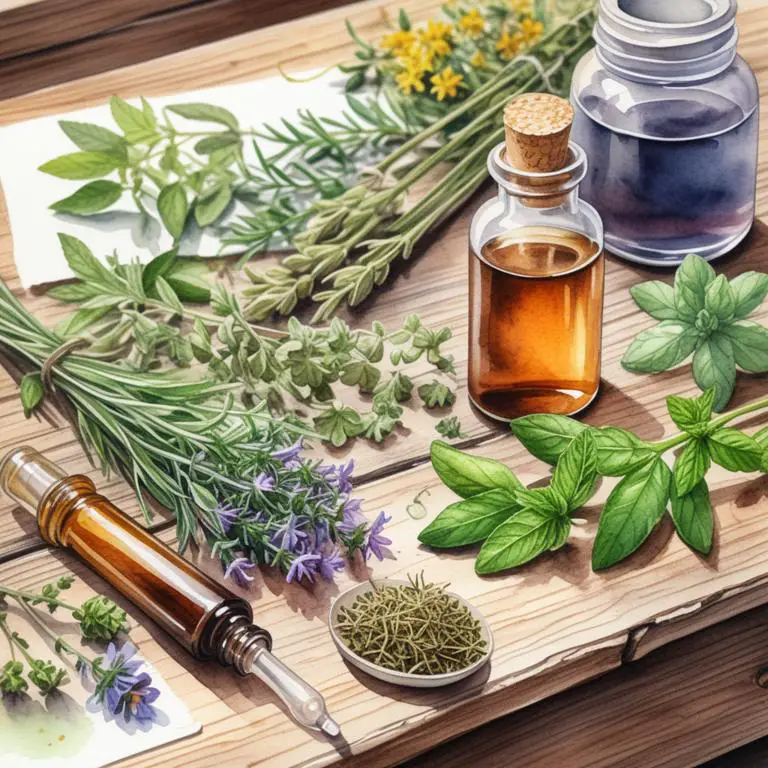
Natural Stiff Neck Remedies: Causes and Herbal Preparations
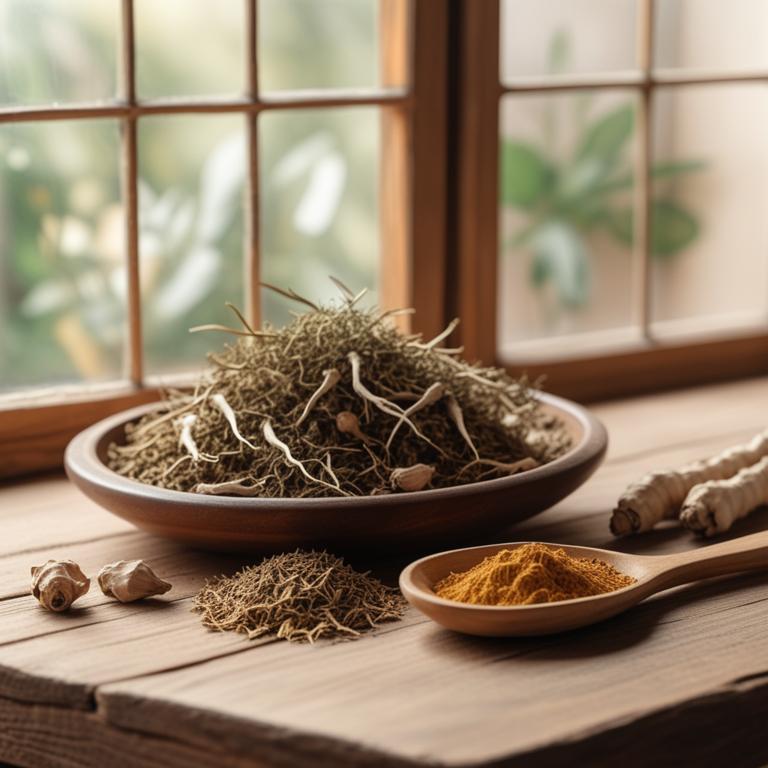
Knee Swelling: A Guide to Medicinal Herbs and Natural Preparations
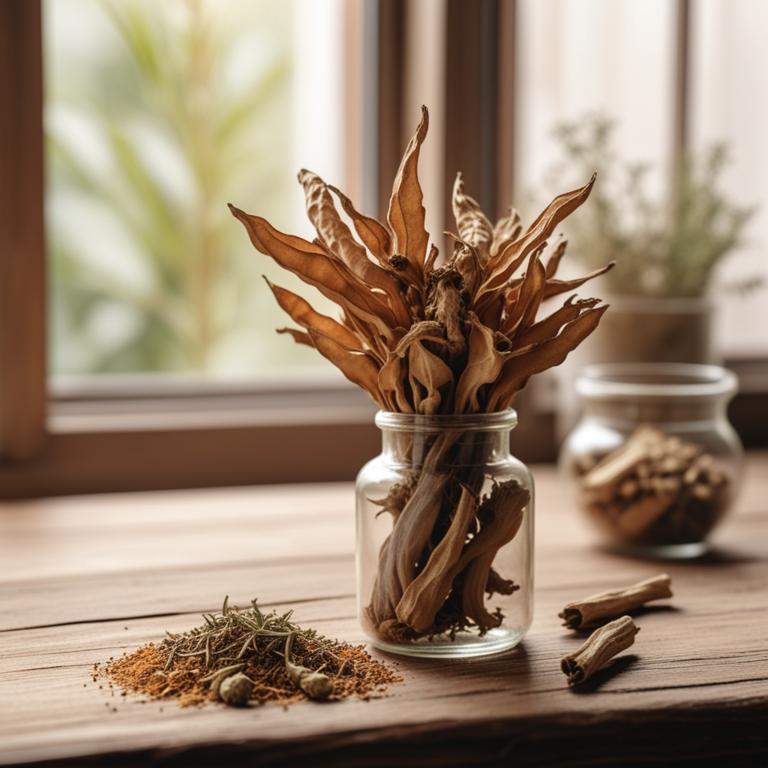
Understanding Lower Back Pain: Causes, Medicinal Herbs, and Herbal Preparations
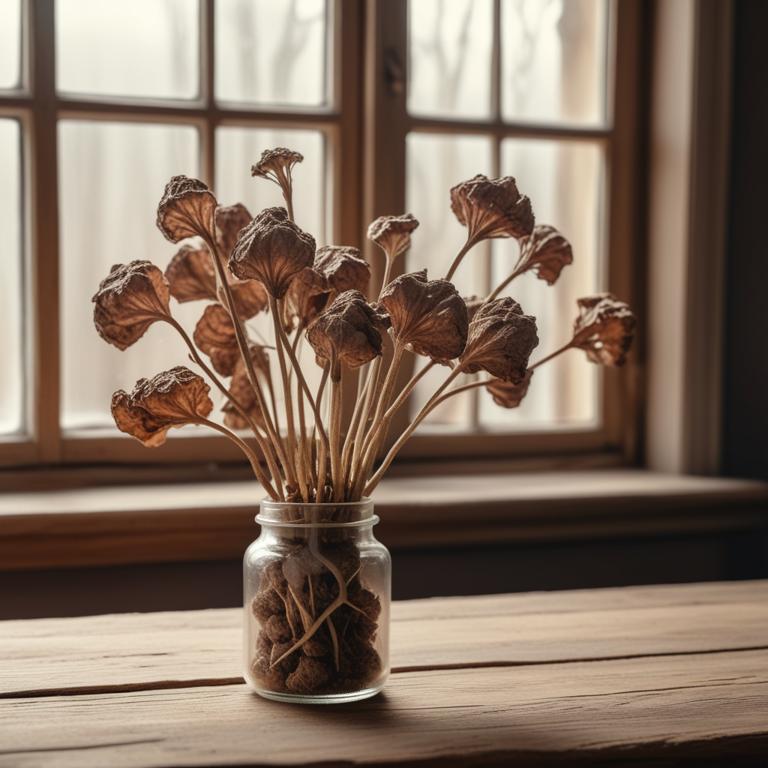
Understanding Arthritis: Causes, Medicinal Herbs, and Herbal Preparations
